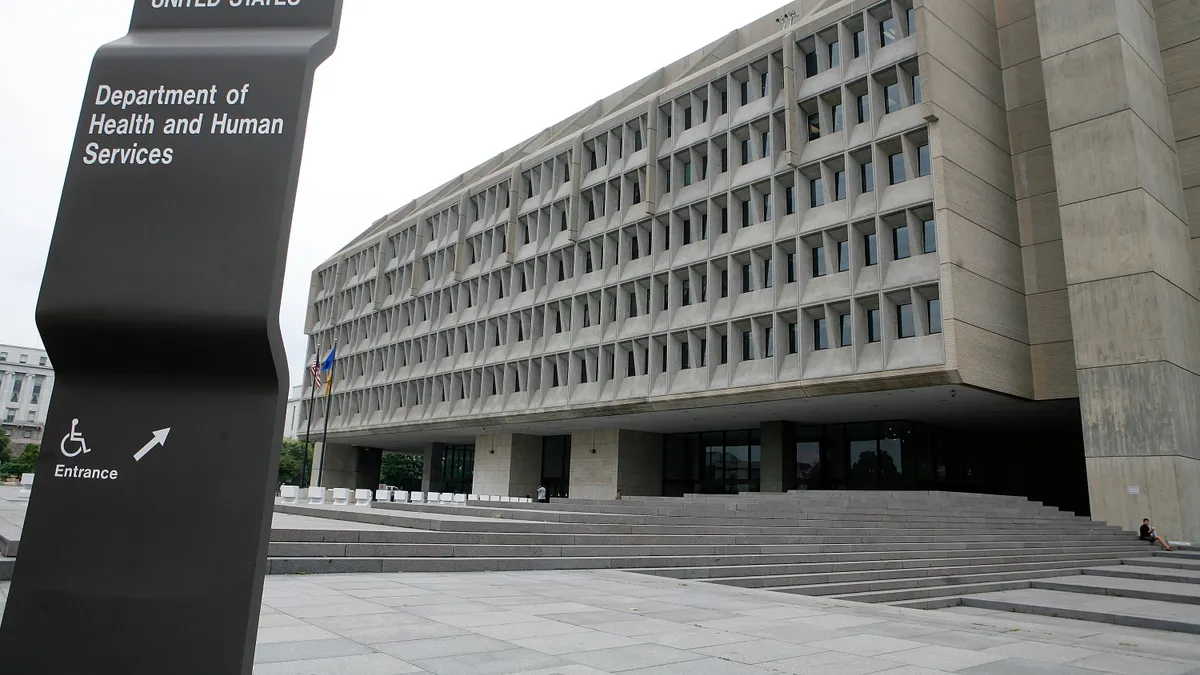In dual payment rules out Tuesday, CMS finalized plans increasing hospital fines for not complying with price transparency requirements, halting the end of the Medicare inpatient-only list and furthering some flexibilities for telehealth services.
More directly regarding payment rates, the agency included a reduction in the Medicare conversion factor of about 3.85%, although some analysts said it is likely Congress will reverse the change. The American Medical Association called for such action on the Hill, noting the cut "comes at a time when physician practices are still recovering the personal and financial impacts of the COVID public health emergency."
CMS is also phasing in cuts to certain specialties despite harsh feedback on the immediate effect such reductions in payment would have to radiation oncologists and other specialists. Meanwhile, the outpatient payment rate for hospitals is going up by 2%.
Device companies could feel the pinch if doctors are squeezed. AdvaMed decried cuts to services that use pricey equipment used in vascular surgery, radiation oncology, interventional radiology, and diagnostic testing facilities, which lobby chief Scott Whitaker contended in a statement "do not reflect actual declines in the cost of this equipment and supplies."
Whitaker said the lobby would go to Congress to try to reverse the cuts.
CMS is also increasing the penalty for hospitals that don't post their prices online to be as much as $2 million a year for larger facilities.
In a fact sheet for the 2022 Outpatient Prospective Payment System, the agency said its "initial analysis strongly suggests there is sub-optimal compliance" with the price transparency requirements. The original fee was $300 a day for all hospitals, regardless of size.
Starting next year, noncompliant hospitals with 30 beds or fewer will be fined $300 a day and larger hospitals will be fined $10 per bed, per day, up to $5,500 a day. CMS is also requiring that the machine-readable files with pricing information be accessible to automated searches and direct downloads. Some hospitals had reportedly been using hard-to-access files as a tactic for obscuring information.
The American Hospital Association said it was "very concerned" about the change, "particularly in light of the many demands placed on hospitals over the past 18 months, including both responding to COVID-19, as well as preparing to implement additional, overlapping price transparency policies."
Research has shown that compliance with the price transparency requirements is dismal, and experts said it was unlikely to improve without more of a financial hit for noncompliance. A JAMA study published in June found that of 100 randomly sampled hospitals and 100 of the highest-earning, 83% were noncompliant.
That backed up an earlier study from JAMA Network Open that noted a bit more than half of the nearly 5,300 hospitals researchers studied did not have a chargemaster in a machine-readable format as the law requires. Another Health Affairs study reported similar findings.
Hospital groups were also unhappy that CMS is continuing the payment rate for drugs acquired through the 340B drug pricing program at more than 20% below the average sales price. Hospitals have challenged the cut in court, but to no avail.
CMS first pitched eliminating the list of services that can only be provided in an inpatient setting for Medicare members in August of last year, under the Trump administration. In the proposed OPPS this July, the Biden administration said it planned to reverse course after feedback from frustrated hospital lobbies.
On Tuesday, that was finalized. It's a blow to ambulatory surgery centers, and to health systems like Tenet that have been expanding their footprint in the space.
Telehealth
As telehealth visits start to level off at much higher rates than before the pandemic, one key question is how many of the restrictions to virtual care use and access will remain after the COVID-19 public health emergency ends.
Providers got some answers Tuesday.
In the 2022 Physician Fee Schedule, CMS is finalizing the elimination of geographic restrictions to providing telehealth services for the diagnosis, evaluation, or treatment of a mental health disorder, in an aim to improve access and cut red tape. Cowen analysts said they "view the changes as a modest positive for telehealth stakeholders, but continue to believe bigger impact changes will require additional legislation."
Telehealth services that are being temporarily covered by Medicare because of the COVID-19 pandemic will continue to be covered through the end of 2023, "allowing additional time for us to evaluate whether the services should be permanently added to the Medicare telehealth services list," CMS said in a fact sheet on the PFS. Previously, they were slated to drop off the list at the end of the COVID-19 public health emergency.
CMS is allowing for audio-only visits to diagnose and treat mental health issues in a bid to improve access to those services. That comes as the pandemic has greatly exacerbated conditions like depression and anxiety.
After pushback from stakeholders, the agency is eliminating a proposed requirement that virtual visits for mental health require an in-person visit in the six months prior to initiating telehealth. Instead, the patient will need to go for an in-person visit once a year, with exceptions allowed for beneficiary circumstances.
Also, CMS is requiring providers to provide immunization records and case reports of Medicare patients with public health agencies in an effort to help those groups better track health threats to communities.
Molly Murray, a senior manager with Pew Charitable Trust's health IT project, wrote on Twitter that the change "will let agencies get more complete data more quickly so they can do their jobs — something that wasn't always the case during the pandemic, and which absolutely hampered the country's response."
Value-based care
As it continues to refine its push to have providers in value-based pay arrangements, CMS is tweaking the Quality Payment Program to increase the performance threshold clinicians must exceed next year.
The agency is also moving forward with a program intended to replace the Merit-based Incentive Payment System, despite a pushback from providers that it is not ready for prime time.
The MIPS Value Pathways model is intended to align the reporting requirement for providers and "ensure more meaningful participation" in the performance measuring systems, CMS said. But groups representing doctors and hospitals said in comments on the proposed PFS that the MVPs doesn't seem likely to reduce administrative burden on providers.
AHA has previously said CMS needs to address "conceptual issues" with the program before executing its plan for MVPs to replace MIPs by 2027.
The agency in the final PFS rule put forward the initial set of clinical areas to be included: rheumatology, stroke care and prevention, heart disease, chronic disease, management, lower extremity joint repair, emergency medicine and anesthesia.
Also, clinical social workers and certified nurse-midwives were added to the list of those eligible to participate in MIPS.
In a win for providers, CMS finalized a longer transition for accountable care organizations in the Medicare Shared Savings Program to report their clinical measures electronically, citing provider concerns over interoperability.
Also delayed is enforcement of the Appropriate Use Criteria program, which requires providers to use clinical decision support when ordering some advanced diagnostic imaging. It will now be enforced in January 2023, instead of next year.























